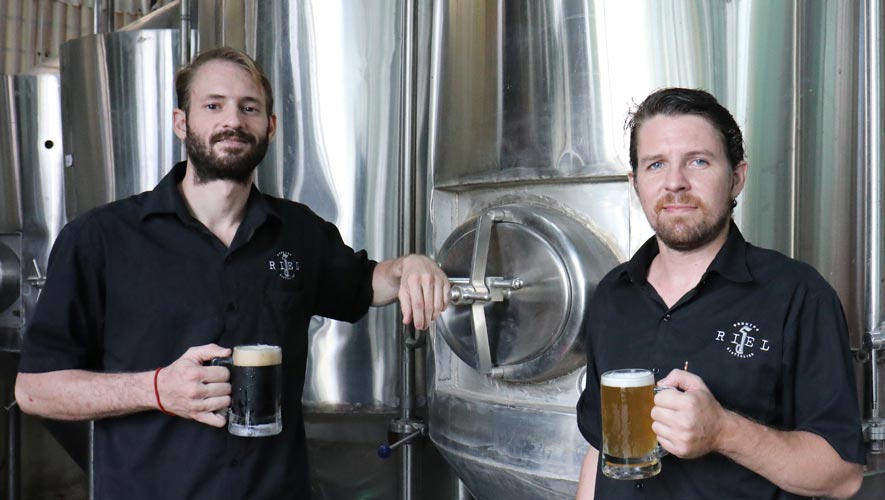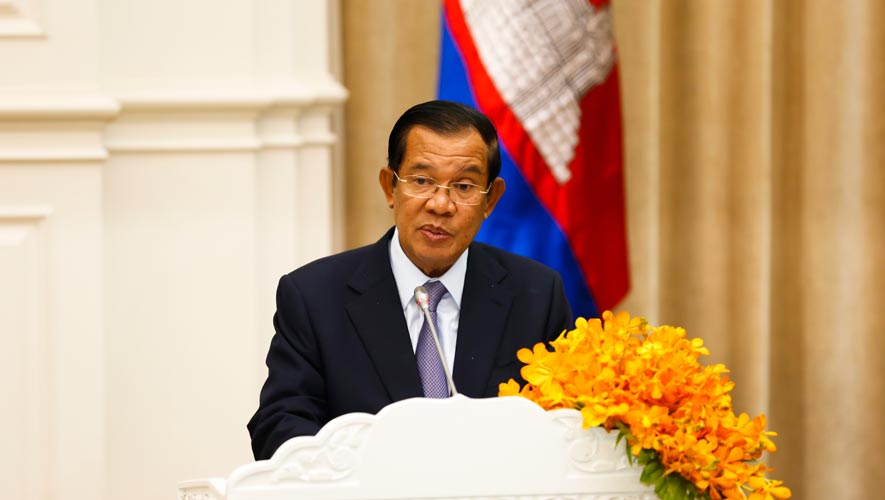Cambodia’s small beer makers are taking the leap from hobby to serious business
For the latest Cambodian Business news, visit Khmer Times Business
It’s a rainy Tuesday afternoon and Australian Andrew Strugnell and his American business partner Tyler Bareither are sitting at their new, and second, craft brewing location across from Toul Sleng Genocide Museum talking beer and business. Behind them are the eight new 1,500-litre fermentation tanks that put them at a total of 12 tanks and boost production from four 300 litre tanks to a total of 18,000 litres, more than they can sell locally.
The craft brewing industry has exploded in Asia, according to industry experts and those involved in Phnom Penh. While all those involved here started with a labour of love, real revenue is on the horizon.
Asia is the largest beer producing region on the planet. In China, there are more than 300 craft beer makers attracting the attention of beer conglomerates like AB InBev. Globally, the craft brewing industry is expected to reach $503 billion by 2025. In Southeast Asia, the industry is growing at a rate of 30 percent per year.
There are 150 craft breweries in SEA and the retail market value was estimated to be over $135 million in 2017. Most are in the Phillippines, which has 48. Vietnam and Thailand are second and third in terms of seeing the most expansion. In Cambodia there are 11 with names like Himawari, Kingdom, Hops, Munich and Cerevisia Brewery (Latin for beer), which is owned by American Chamber of Commerce executive director Erich Phillips.
A craft brewery is defined as a small and independent operation that produces less than six million barrels of beer and is not more than 25 percent-owned or controlled by a large alcohol industry company that is not a craft brewer.
Here, 65 percent of the brewers operate brew kettles that are five hectolitres or less, 500 litres. Cambodia produced 6,840 hectolitres in 2017. Numbers for 2018 are still being gathered by SEA Brew the Southeast Asia Brewers Conference, which supports and hosts conferences and trade fairs for brewers and distributors.
“SEA Brew is a platform for the regions’ brewers and distributors to learn about the latest advancements in the industry as well as share knowledge to help develop their skills,” says Charles Guerrier, Director, Seabrew Ventures Pte Ltd.
While Cerevisias’ Phillips tends to downplay the business as more a love of beer than a profit enterprise, his brewery still supplies their pale ales, blondes, red ales, wheat beers and more to 17 restaurant establishments in the country.
The back story is a common one: “In 2013, a few like-minded imbibers from the West joined our brew-master in a common goal, to find a craft beer, microbrewery or libation in Phnom Penh that was reminiscent of home.”
“I am just about having a good time and sharing something I like,” says Phillips on a night at his restaurant Botanico where he is hosting three young Cambodian entrepreneurs who are starting a restaurant of their own.
“My ethos is I love traveling and it is a way to introduce myself to Cambodia,” Phillips says.
But the business angle is very real and cannot be ignored. Cambodia is not only selling more and better beer, but brewers are benefitting from lax regulation and the ability to easily export to neighbouring countries like Thailand, which puts a much heavier business burden on local brewers. That allows companies like Cambodia’s Kingdom Brewery, the country’s largest contract brewer to sell to those countries. Same with Riel Brewing & Distilling and others.
“There are more the restrictive brewing and distribution laws in Thailand that have stifled microbrewing there,” says SEA Brewing’s Guerrier. “To have a license to brew, package and distribute your products in Thailand you need to be able to produce 100,000 hectolitres (10 million litres) a year and have cash reserves of $250,000.” There are still small brewpubs in Thailand, but they are not allowed to distribute.
Says Guerrier: “As more people discover the varieties of flavours found in microbrewed beer, its popularity will grow. This growth will be more rapid in the more developed economies of the region purely due to the fact that is more expensive to produce than commercial lagers.
“In five years, the retail market for the region’s craft beer will be well in excess of half a billion dollars. This will have attracted the attention of the global ‘mega-brewers’ (AB Inbev, Heineken, Lion) who will look for breweries to acquire in all the major markets in the region to establish a presence. I think we shall also see more investment coming into the region in terms of infrastructure (for example better cold-chain logistics), education (including brewers, service staff and consumers) and the emergence of more contract brewing facilities making craft beer more accesable to consumers than ever before and sustain the solid growth of the industry.”
For guys like Strugnell and Bareither and their Cambodian partner John Hongly at Riel it is their bread and butter and allows them to expand into bigger markets.
While they still bottle manually, those days are almost over, they think. “This is the year,” Strugnell says. The partners are also dreaming of winning the SEA beer competition that will be held in Bangkok in September. If they can do that they are optimistic a buy-out could be in the future.
“It’s going to be an industry that carries on long after we are gone,” Bariether says. “It will create a lot of jobs. It’s an exciting time.”




